How our language helped contain COVID-19
Dr Nelly Martin-Anatias
19 May 2020
![]()
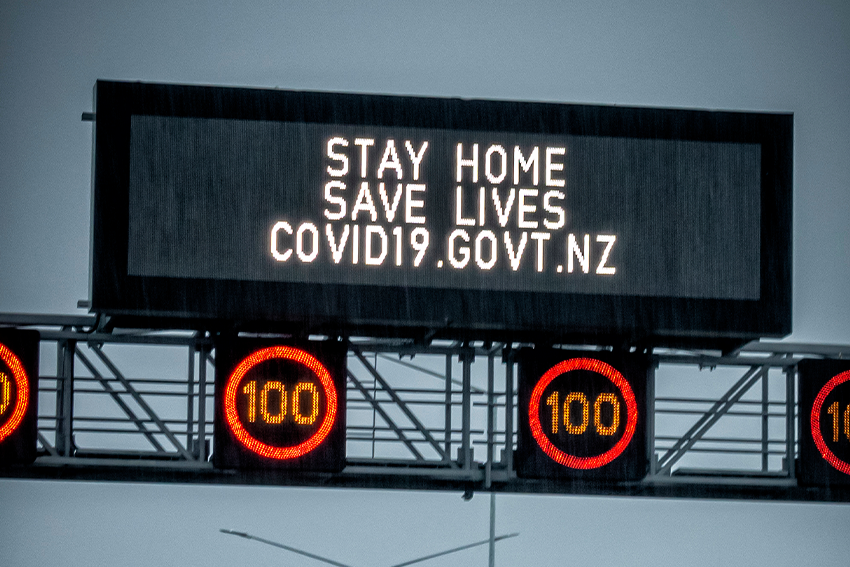
New Zealand moved to alert-level-2 on May 14, lifting strict lockdown restrictions after two days in a row of zero probable and new cases of COVID-19.
From this figure alone, we can safely assume the government’s swift decision to put the whole country into lockdown since March 26 has been producing some positive trends and results.
Prime Minister Jacinda Ardern called it a potential victory, signalling that it is too early to stop what New Zealanders have been doing for a month in battling this global pandemic.
To date, New Zealand has recorded 1,147 cases, with 21 deaths and 1,398 recovered patients.
As a sociolinguist, I have been observing how language use plays an important role in tackling the pandemic. I have collected about a hundred pictures of signs in the Auckland central business district (CBD) since the level 4 lockdown began. Aside from acting fast, in my view the government and other government bodies and fellow Kiwis have applied effective communication strategies.
What is the NZ nationwide lockdown?
When the lockdown went into effect, new signs responding to the government’s directions have been noticeably visible, created by both the government and private businesses.
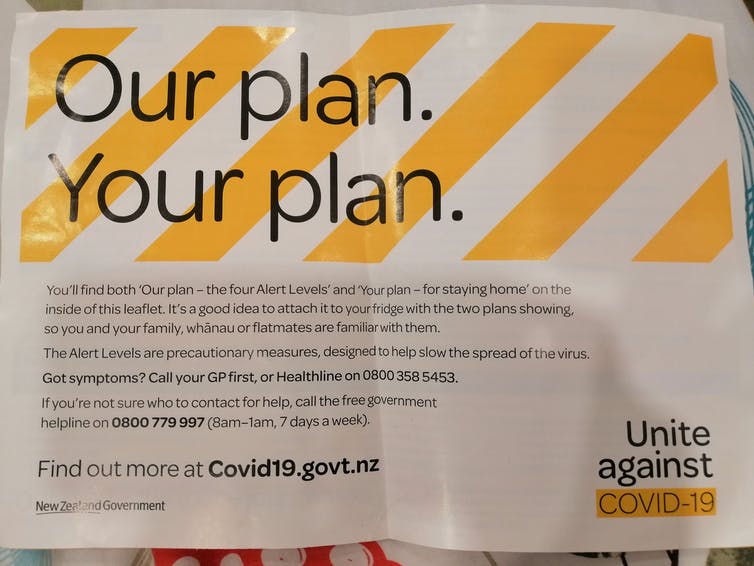
The brochure the government sent out at the very beginning of the lockdown explains what the four alert levels mean.
Level 4 restrictions meant all New Zealanders needed to stay at home at all times. Most businesses and educational facilities were closed. Essential business such as supermarkets and pharmacies remained open.
While Kiwis could go for a run or a walk, we had to do so within our local area. We could do it only within our own “bubble” (the person/people whom we live with during the lockdown). We also needed to maintain our two-metre physical distancing from other “bubbles” when exercising.
Level 3 was virtually the same restrictions, except the “non-essentials” such as stores and restaurants could open while maintaining the government’s directions by applying contactless pick-ups and deliveries.
Statements used during the lockdown
I’ve looked into these signs through a critical lens, which consists of unpacking the linguistic elements of the statements and analysing these in their social-cultural and political contexts. This exercise helps us understand the layers behind a statement used on the signs.
I will start with the type of sentences that both the New Zealand government and Kiwis have used during the lockdown.
Among other types of sentences, imperatives are the most productive sentences used frequently in this discourse. These are: Be kind, Stay home, Save lives, Check in on the elderly or vulnerable, Unite against Covid19 etc.
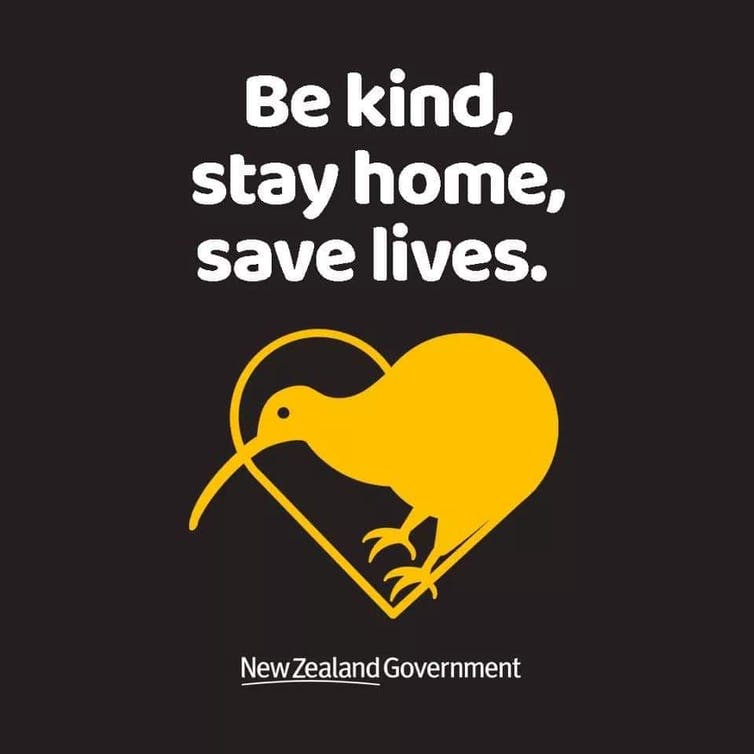
Be kind, stay home, save lives
The use of imperative is to demand others do something, as a critical discourse analyst argues. In this sense, imperative sentences regulate Kiwis’ behaviour during this global outbreak. Through such sentences, the prime minister delivers strong and firm directions on how people need to behave during this pandemic as a way to fight against it.
While demonstrating hierarchical power, the government is also showing empathy. The terms used showing compassion are visible and hearable, such as “kind” in be kind and to “check in on” the elderly and the vulnerable. The terms are frequently used by the prime minister in her speeches and also in the government brochures distributed in residential areas and public places, such as parks, shopping centres and bus stops.
The government also emphasises togetherness by using the pronoun “we” as in “We’re all in this together” and “We’re a team of 5 million”. The use of the inclusive “we” appears to instil and highlight the collective spirit, the oneness and togetherness where everyone needs “to do our bit” in fighting this pandemic.
It’s not only the government that routinely repeats this message, but also the business sector, such as New Zealand chain store Smith and Caughey’s and Westpac bank, as we can see in the picture below.
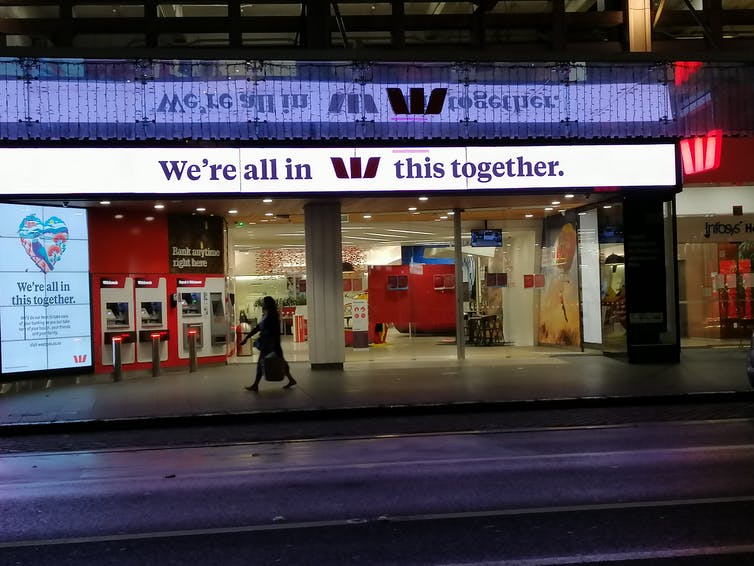
We’re all in this together
The sense of Kiwiness is also instilled via the Māori phrase “Kia kaha” (“Stay strong”). Māori is unique to New Zealand; thus it appears to underline the Kiwiness in facing this global pandemic.
The camaraderie is equally observable in store announcements. “To do our part, we are closing our stores and online shops,” one sign says. I read this statement as shop owners being aware that everyone should make their contribution. While the government emphasise collectivism daily, the community also show this through their choice of words and actions.
Aside from the togetherness, the signs also show the public is complying with the government’s leads and trusts them.
The lockdown surely has put the economy into a declining trend, yet the prime minister has repeatedly said that the people are more important and we can always rebuild our economy as long as we have people.
Again, a majority of businesses have reiterated this awareness.
Echoing the prime minister, store owners also emphasise that people’s lives are the primary concern, while their business is secondary, during this global pandemic.
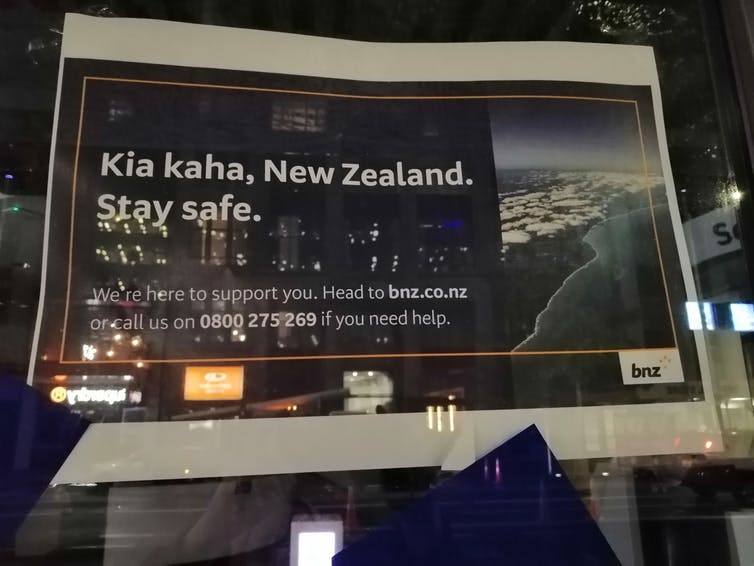
Kia kaha, New Zealand
What can we learn from this?
A powerful statement and a clear direction during an unsettling time when many feel lost are necessary. The New Zealand government has been informative and firm when delivering such messages. At the same time, it has been clear and compassionate.
Through its language selection, the New Zealand government has delivered this set of values to fellow Kiwis. I have found this type of leadership, reassuring, informative, refreshing and endearing.
More importantly, we also learn that fighting this battle alone is impossible: we need to work on it together. By choosing words carefully, establishing inclusivity and oneness, both the government and the Kiwis are doing their bit in the battle with COVID-19. We can sense the mutual trust.
Here, we are presented with evidence that our language use does matter. And, at this very moment, it can help us save lives.
Nelly Martin-Anatias, Researcher of Auckland University of Technology Indonesia Centre (AUTIC) & Lecturer of School of Language & Culture, Auckland University of Technology.
This article is republished from The Conversation under a Creative Commons license.